After three and a half weeks of sedate secondary fermentation and conditioning, my home brewed Scotch Ale/Wee Heavy was ready to be bottled. I’m calling it Barlennan, mostly because I’m a science fiction nerd, but also because “Barl” is the start of barley and “ennan” sounds like the suffix to a vaguely Scottish surname. Aren’t you glad I over-explained that? Anyway, as per usual, I learned many lessons (i.e. I made many mistakes) and I figured I’d also recount my attempt to make spent-grain cookies.
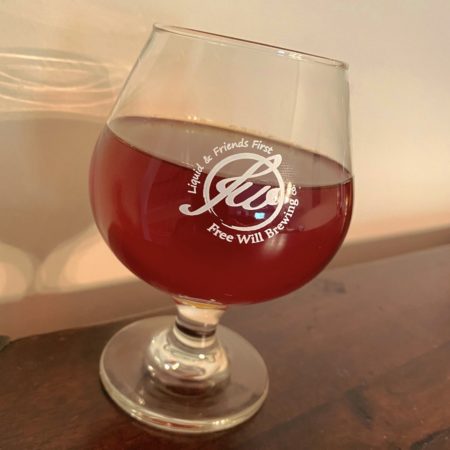
Home Brew Bottling Day
As I’ve already mentioned, I split the five gallon batch into two secondary fermenters. I added oak cubes that had been soaking in Aberlour Scotch to one, and left the other alone. At bottling, I split the batch into four different variants:
- Plain old Barlennan
- Aberlour Scotch Oak-Aged Barlennan
- A blend of Plain and Oak-Aged Barlennan
- Fortified Barlennan
The first three are self-explanatory, but I should explain the fourth because this is the first time I’ve practiced that sort of alchemy. So I just added around 80 ml of straight scotch to three bottles. According to my calculations, this should bring the ABV up to around 15% for these bottles. Incidentally, if I had used Aberlour A’Bunadh, it’s cask strength potency would have probably made this more like 18% ABV. The Aberlour 16 is only 80 proof, so it couldn’t do as much. Regardless, my prediction is that these bottles will not carbonate at all and will be ridiculously boozy, but I figure it’s an experiment worth trying. Mad science has to start somewhere.
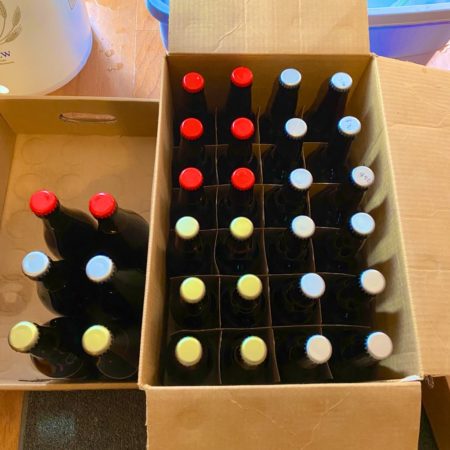
I ended up bottling about a case and a half of this batch, and dumped the rest into a keg. The initial tasting revealed a huge fruity component, but also the notes of rich caramel and vanilla that I wanted. I attribute the bigger fruity notes to the higher ambient temperature during fermentation, which seemed to have an impact on this batch. This is why I normally only brew in the colder months. I blame the pandemic.
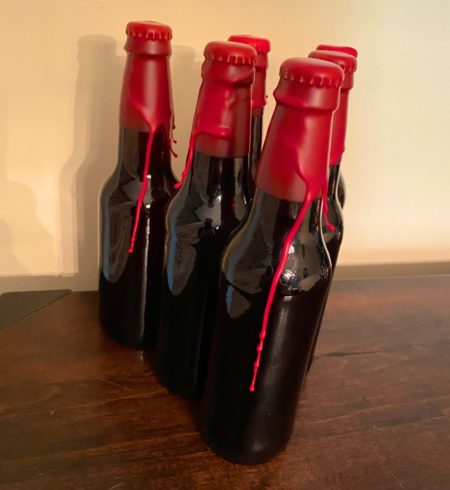
I’m still waiting for the bottles to condition, but I’ve been sampling the kegged portion and I’ve observed some things. The fruity notes have gotten even more pronounced and I’ve noticed a distinctly savory umami character. So far, it’s not unpleasant, but I this could turn to an overwhelming soy sauce flavor at some point. Apparently, this has to do with autolysis; basically when alcohol is aged on dead yeast cells. Once again, I think this is due to the higher fermentation temperatures I subjected this batch to, as well as the more extended aging. I might also attribute this to my less-than-stellar skills at kegging beer. I’m hoping the bottles will fare better. I mean, I dipped some in wax, which has to make them taste better, right?
Spent Grain Cookies
After brewing, you’re left with a bunch of barley that’s been soaked in water and thus most of the sugars have been extracted. I usually throw this spent grain out, but I tried something different this time. I saved some grain and to dry it out, I put it in the oven at very low temperatures for a while.
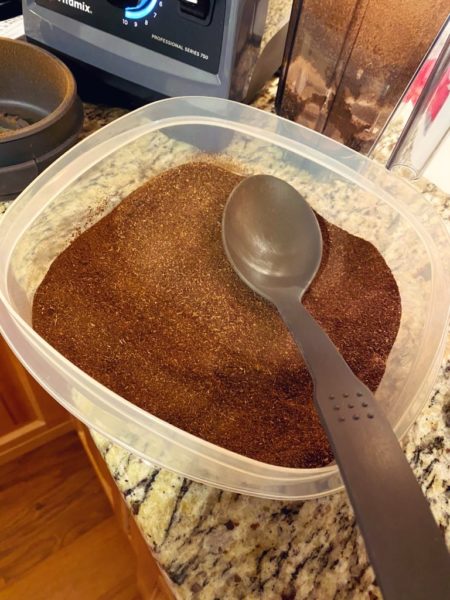
It took around 6-7 hours to really dry it out, but once dry, I put it in my blender and turned it into as fine a powder as I could manage. I did some research and found that the general rule of thumb is to substitute about half of a given recipe’s flour with the spent grain flower. I did this for a basic cookie recipe, and huh, it turned out to be a very dark batter.

Since I’m an extract brewer, all of my spent grain was specialty grain, which tends to be darker. I also suspect the long drying process added some color. Next time, I might spread it out on a pan and leave it uncovered in the fridge overnight. This should remove moisture and thus result in shorter time in the oven.
The cookies did bake up just fine though, so there is that. If I were doing this again, I might use a little less in the way of spent grain, as it does add an earthier note to the cookie. They were still tasty though.
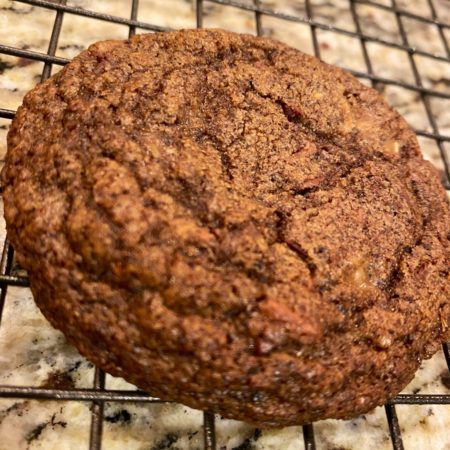
Ultimately, I’m not sure if it was worth the effort, but it was nice to not waste the grain after its first use. I’ll probably try it again (especially if I use some lighter specialty grains in future batches). Maybe I’ll make banana bread instead of cookies…
So there you have it, another home brewing batch in the books. Next batch probably won’t be until fall/winter, so as to avoid higher temperatures. I always did that before, but the pandemic forced my hand. But you live/brew and learn, I guess.